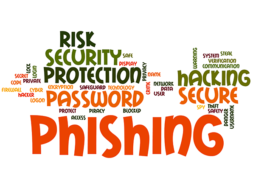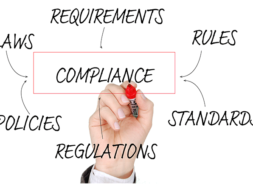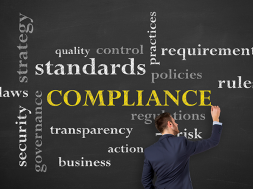
When the Unexpected Happens
By Nancy Bradley, Vice President, Daytona College
Each day we go to our jobs with a plan to take care of students, complete our list of tasks, start new projects, implement new strategies, and effectively handle the things that come up. From time to time, there are situations which present themselves that cause us to adjust our plan. Depending upon where one lives across the country, there are weather and climate issues, natural occurrences and sometimes disasters. Unfortunately, and too often these days, we learn of man-caused disasters or tragedies.
As leaders, we have to deal with each situation with grace, common sense, and the ability to direct everyone with confidence and assurance.
With weather emergencies such as the hurricanes we encounter in Florida, we have the ability and expectation that planning and preparation will take place, even when the storm changes direction. Other situations, such as the wildfires and mudslides in California, may be predicted and experienced very differently. Government leaders, business leaders, and citizen leaders must find ways to cope with and resolve the problems, no matter their nature or size. Though vastly different, we college leaders must also be able to quickly assess and cope with unexpected situations of many kinds.
Anyone who has been working in our sector of higher education for any length of time understands that for us, no two days are ever the same. The daily operations of each department are fairly predictable, and each staff member is trained to conduct the duties associated with their department. One may think that the day is set with a checklist, ready to be crossed off and as the workday comes to a close, the list is satisfactorily completed. Each staff member feels that grand sense of accomplishment that comes as one ties up the ends of another job well done.
We felt just that way on a Friday morning at Daytona College. Like many institutions, for us, Friday may be a casual dress day or students may be working on an end of the week project that may be a diversion from the standard plan. Friday is a day full of anticipation. Everyone is happy on Friday, gearing up for the weekend and a chance to take a break from the many priorities that we juggle. Or, like many of you, we hoped for a jump on a quiet weekend in which to slip in and take care of some things that seem to get accomplished so much faster when no one else is around.
However, when something happens, you have to pivot and then deal with it. Unlike a natural disaster or tragedy, we do have such things that happen every day. A thunderstorm strikes a transformer and the power surges and goes down – internet and computers are not functioning; an instructor resigns with one-hour notice; a student or instructor has an accident on campus; a disgruntled employee is creating problems, and you are late in recognizing it; you see a trend with drastic changes from a regulatory body that will hinder your service to your students. Or the school receives an unannounced visit from one of your favorite representatives from the accrediting commission. For us, it is the Accrediting Commission of Career Schools and Colleges (ACCSC).
This particular Friday was to be a very busy one for us, as we were scheduled to conduct an in-service training session for the admissions team. Pamela Kraska, our compliance/regulatory affairs director and I were the trainers. Our training agenda included covering updates at the state, accrediting, and federal levels as they related to admissions and enrollment management. Fridays seem to be good for training, especially for admissions since they wind down the current commitments and gear up for the following Monday.
Just as Pam was on her way to the classroom to ensure that the audiovisual tools were ready, she encountered a very familiar face in our lobby, which was crowded with spa clients and visitors interested in our programs. To her surprise, there was a staff member representing ACCSC asking the receptionist if the Campus Director was in. Even for seasoned personnel like us, encountering the staff member in the lobby was quite a surprise. After greeting the commission representative, we directed him to a place where he could spend the day and work. He presented us with a letter from the Commission stating that we had been selected to undergo an unannounced on-site evaluation. Along with this letter, he gave us a list of materials that we were required to provide for review during the unannounced On-Site Evaluation.
As word spread through the office that we had an unexpected visitor, questions were circulating, such as, why? Is something wrong? What happened to cause this? As experienced volunteers with ACCSC, we, Pam and I, understood that the Commission conducts such visits at their accredited institutions.
Depending on the policies set forth by any accreditor as they relate to unannounced visits, their member institutions should anticipate this event.
It was our duty to make sure that our own staff understood that there are various reasons why and when a visit will occur, and just why we were undergoing such a visit that day.
A visit by ACCSC may be announced with prior notice to the institution or unannounced as necessary to assist in the determination of an institution’s compliance with accrediting standards. This is a powerful statement in that it applies to all aspects of the institution’s operations. No matter which agency is represented, accredited institutions are expected to be in continuous compliance with the Standards, Guidelines, and Criteria. Since the accreditation standards apply universally to each area of operation, all the eligibility criteria, including strong academic programs, student outcomes, financial stability, and more, every accredited institution should remain alert and attentive to their compliance on a daily basis.
The Accrediting Commission may direct a team to visit an institution for a special evaluation or a fact-finding visit to determine prior and continuing compliance. Or, the institution may be randomly selected for a general overview and checkup. The policy to conduct unannounced on-site evaluations is used as a means to monitor compliance with accrediting standards under normal circumstances at a point between renewal cycles. We were mid-way through the timeframe of our five-year grant of accreditation. It was our turn to demonstrate that we were in compliance!
It is imperative that everyone employed by the school understands that this is part of the process and a requirement for ACCSC accredited institutions.
Leaders from every accredited institution should be knowledgeable about the site visit policies of their accrediting commission.
Once the initial surprise was calmed and we had our list of materials the representative needed, it was time to put our existing plan into action. Like many institutions that employ individuals who tend to the reporting and compliance requirements in a project management role, we, Pam and I, function in that capacity. We are the people who coordinate the data and communicate with all departments to ensure each person understands how their position and job duties are vital to our institutional accreditation. Therefore, as we began that day with our visitor, everyone was looking to us for direction. We began to execute our plan. The following elements are listed as we prioritized them at Daytona College:
1. Designate an appropriate space for the visitor to work. You want it to be large enough to spread out the work, private, yet accessible by your staff, especially the main contacts. Wi-Fi access, a copier and a printer should be available. Avoid designating someone’s private office if possible, as the visitor would likely be interrupted by this person all day. When a representative comes to visit, he or she has specific tasks to accomplish, normally within eight hours. Unnecessary interruptions and casual conversations with your staff only delay the process.
2. Key staff should be consulted immediately. Owners, CEO, Campus Director, the Dean, Program Chairs, Registrar, Student Services personnel, Career Services staff, Admissions staff, Financial Planning staff, etc. Don’t forget the custodian. On-site faculty will be consulted, and make sure to notify any online or part-time faculty in case the visitor would like to contact them. In the event the representative would like to communicate with employers or Program Advisory Committee members, contact information should be kept current.
3. Introduce the visitor to the staff member who will serve as the main contact for the visit. It is best to have one person who is the primary contact throughout the visit. As part of our plan, we had identified the individuals (need at least two – a primary and secondary) who are ready to serve as the main resource person during the visit. The primary person may be on vacation when the unannounced visit occurs. The designated individuals must be ready to direct all questions or requests for information to the appropriate department, follow up to ensure the request is being taken care of in a timely fashion and answered with factual data and backup documentation.
4. Tour the campus. This is a great opportunity to see how your institution operates on a typical day. The visitor will be able to do a quick check of instructors and students engaging in their activities. Facilities and equipment may be highlighted during the tour to provide evidence of resource allocation geared towards quality programs and student success. The designated tour guide should have been chosen ahead of time as part of the plan.
This person has been trained to conduct the tour and if possible, should not be one of the primary visit contacts since they have other responsibilities.
This person should be able to point out and describe the best things about your school, including details about student projects, faculty members by name, labs, as well as support services by function and staff. It certainly helps to make a good impression when the tour guide also knows students by name. When there is a general atmosphere of goodwill throughout the campus, student interviews and surveys will reflect that.
5. During the tour of the facilities, the school’s staff will need to prepare the materials for the on-site evaluation in an expeditious manner in order to facilitate the review process. At the end of the campus tour, the commission representative should be provided with all the items on the material list. This may not be possible with everything right away, but as many items as possible should be easily accessed by school personnel and ready for review as soon as the visitor returns to the workroom. The rest of the items should be brought in as soon as possible.
A general idea of what a list may include are: a list of currently enrolled students with start dates and program of study; a list of graduates within the last 24 months designated by program; a copy of the school’s catalog and enrollment agreements (cross referenced with the appropriate accrediting checklist); an organization chart with all current employee names and titles; a copy of the school’s most recent Institutional Assessment and Improvement Planning documents; backup documentation for the school’s annual report; a list of all Program Advisory Committee meeting dates separated by program that have been conducted since the school’s last Renewal of Accreditation; a list of programs currently offered separated by program length in months and total enrollment for each; and all current advertising, promotional materials and the URL for the school’s websites.
As part of your standard operations, and to remain compliant, most of the items on the list would remain in a ‘review ready’ mode. Keeping things updated and quality checked internally will help you to present things at their best. Most of the items on the list should stay current and available for review. Once the visitor has returned to the designated work area, the primary contact should be ready to present items that have been requested by the visitor. Additionally, during the tour, a staff member should have placed cold water and snacks in the room.
6. At any time during the visit, the visitor may request additional detailed information, back up documentation, or clarification about anything that has been reviewed or discussed. Therefore, it is imperative that the school maintain meticulous records and back up documentation for each area of school operation. The ACCSC Commission member has the freedom to tailor the material list to meet the purpose of the unannounced visit. This underscores the importance of designating an appropriate institutional representative who is thoroughly prepared for such an assignment. This person and any support staff need to be able to adjust their own plans for the day and count on full immersion in this event until the visitor leaves campus. Their roles will continue afterward as any response to the Visit Report is prepared and submitted to the Commission.
7. The Commission Representative also surveyed the students who were attending classes that day. Part of a preparedness plan includes knowing the pulse of the student body at all times. End of term surveys are a good way to measure their overall satisfaction with the school.
We survey our students regularly and use the results to fine tune things which will assist the student in the path to program success and employment in their field.
8. As part of the plan, all staff and faculty members should have previously been trained on the Standards of Accreditation, and their role and expectations for compliance. Therefore, staff should be ready and open to questions during the visit. The obvious point here is that it’s too late to bring someone up to speed once the visitor is in the door.
9. In the spirit of staying prepared for the unexpected, the school must make sure to maintain those items which are of the highest priority as they relate to the Standards of Accreditation or any criteria set forth by other regulatory bodies. Train all staff on your policy for unannounced visitors. Have the ability to prepare materials in an expeditious manner and pull student files quickly. Being organized is the key to effective operations as it is for preparing for an unannounced visitor. Consider utilizing a box, binder, a specified file cabinet drawer, or other storage containers to hold an updated version of your documents in the event of an unannounced visit. The peace of mind and the impressive presentation to the visitor is worth the preparation.
Continuously engaging your staff and faculty in institutional review and preparedness at multiple levels is an effort on your part to integrate the planning and processes of daily operations. The involvement and training will pay off with calm and rational thinking from your staff at a time when you need it most. The school management team sets the example for the school through its goals and behaviors, which consistently support the school’s mission, compliance, and a focus on strategies designed to improve student success. If one of these goals for you and your team includes working and living compliance on a daily basis and being prepared for the unexpected, your staff will live up to that expectation when the unexpected happens. Your Friday surprise will be handled with professional precision which should result in a smooth and pleasant experience for everyone on campus.
NANCY BRADLEY is a career college owner and administrator from Central Florida. She and her husband, Roger, have been active in this sector of higher education for over 35 years. She currently serves as a Commissioner for the Commission for Independent Education, Florida Department of Education. She is an active Team Leader for the Accrediting Commission of Career Schools and Colleges and has been awarded Volunteer of the Year twice. She is a Past President of the Florida Association of Postsecondary Schools and Colleges. She currently serves on the Board of Directors for Career Source Flagler Volusia and several service organizations. She is a graduate of The Ohio State University in Business Education. She and Roger are the parents of three sons.
Contact Information: Nancy Bradley // Vice President // Daytona College // 386-267-0565 // nbradley@daytonacollege.edu // daytonacollege.edu // Social Media: LinkedIn











